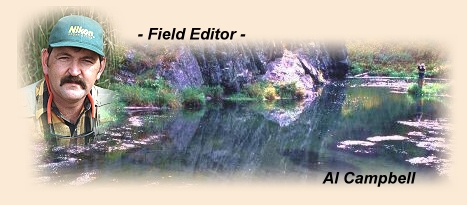|
Last week I mentioned I would show you more
about how crowded the Bighorn can get during
low water. I would also like to mention that
maybe 9 out of 10 of the favorite spots were
too dry this year, so crowding was far worse
than it is during a normal year. I remember
looking into a place where I caught a lot of
trout years ago, but it is at least 10 feet
above the water level right now. So, what
happens to the trout during low water years?
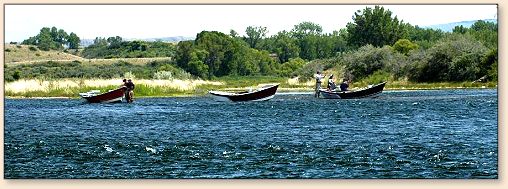
At first, the trout just move into areas already
holding other trout. They do that every year,
so it isn't a big thing to do it for a bit longer,
as long as it is just a bit longer. Rivers like
the Bighorn usually suffer through two to four feet
of fluctuation in the course of a normal year anyway,
so the trout adapt fairly well as long as it isn't
more than a year or two. In fact, with normal
hatches, the trout tend to do very well with a
bit of water fluctuation. They spread out and
offer a lot of chances to fishermen.
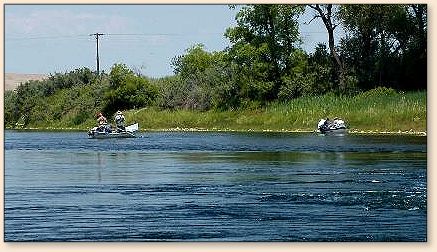
However, after a few years of drought, things
change. Spawning water is diminished for trout
and insects. If the water is allowed to stay
low, sometimes a whole hatch may disappear, or
at least get real small. The same holds true
for the trout. They spawn on gravel beds that
are now out of the water, so they have to compete
with other fish for a place to spawn. Sometimes
the competition is just too much for older trout
and they die. Just a few facts of life that hold
true anywhere there is a drought.
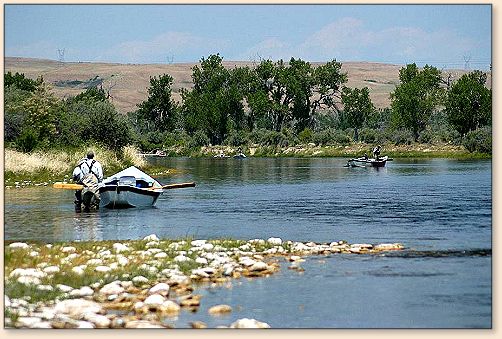
Right now, the Bighorn River is low in trout from
two or three years in the past seven. If you add
this year, you'll get the idea. Low water flows
equal lower than normal spawning results, which
in turn equal lower than normal fish counts in
the river. Now, fluctuate in lower than normal
hatches to feed the fish and those small fish
become prey to bigger fish. The fish numbers
drop again. Unless the small fish can find
some reasonable sanctuary, they might not survive
at all.
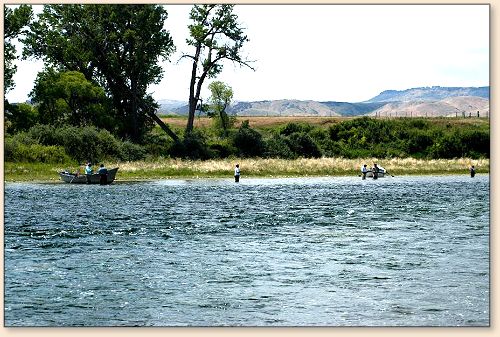
That was the case this year. Small fish were
stacked into a reasonable stretch of stream
where they had a chance to eat and grow. There
were some larger fish around, but not nearly as
many as it would take to thin the small fish too
much. So, the small fish were eating well, and
they were mostly ignored by fishermen because of
their location in the stream. Next year, or the
year following, those fish will be the targets
of most fishermen in the stream. They will have
grown to the point that they will be forced to
relocate to other waters. And the balance of
nature just goes on that way. It may be a six-year
slump before the river gets back to "normal," but
it will eventually get back to normal.
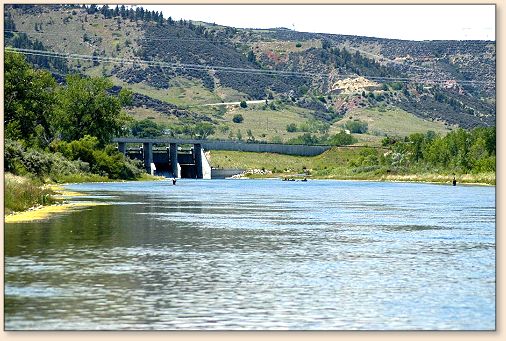
All that said though, the Bighorn is still one
of the better rivers I have fished. The fish
count may have dropped by more than 2/3 in some
areas, but that is still four to five times the
counts on other waters. Maybe I just enjoy it
because so much of the water in my state is
either real low or not flowing at all, but I
don't think that is the case. I think that any
river that can put a dozen or more fish in my
hand each day of a drought year is doing just
fine. The fishing might be tougher in some
areas, but not nearly as tough as it is in
some other areas that brag big fish. Just
something to think about next time you are
planning a trip somewhere.

While you are thinking about that, give the
folks at the Bighorn Trout Shop a call and ask
them about it. They are a Sponsor here, so it
shouldn't be too much to ask should it? Here's
what I think they will tell you. The water is
low, so there are fewer places for fish to hide,
but that can be good. There are fewer fish than
before, but still plenty to catch. You might
catch fewer fish than normal years, but they
will likely be larger than they would have
been four years ago. And, since so many people
have backed out due to small hatches and drought
fears, you have a better chance than you might
have had during a high water year. The guides
are putting people onto fish, and you could be
one of those people. ~ AC
|
